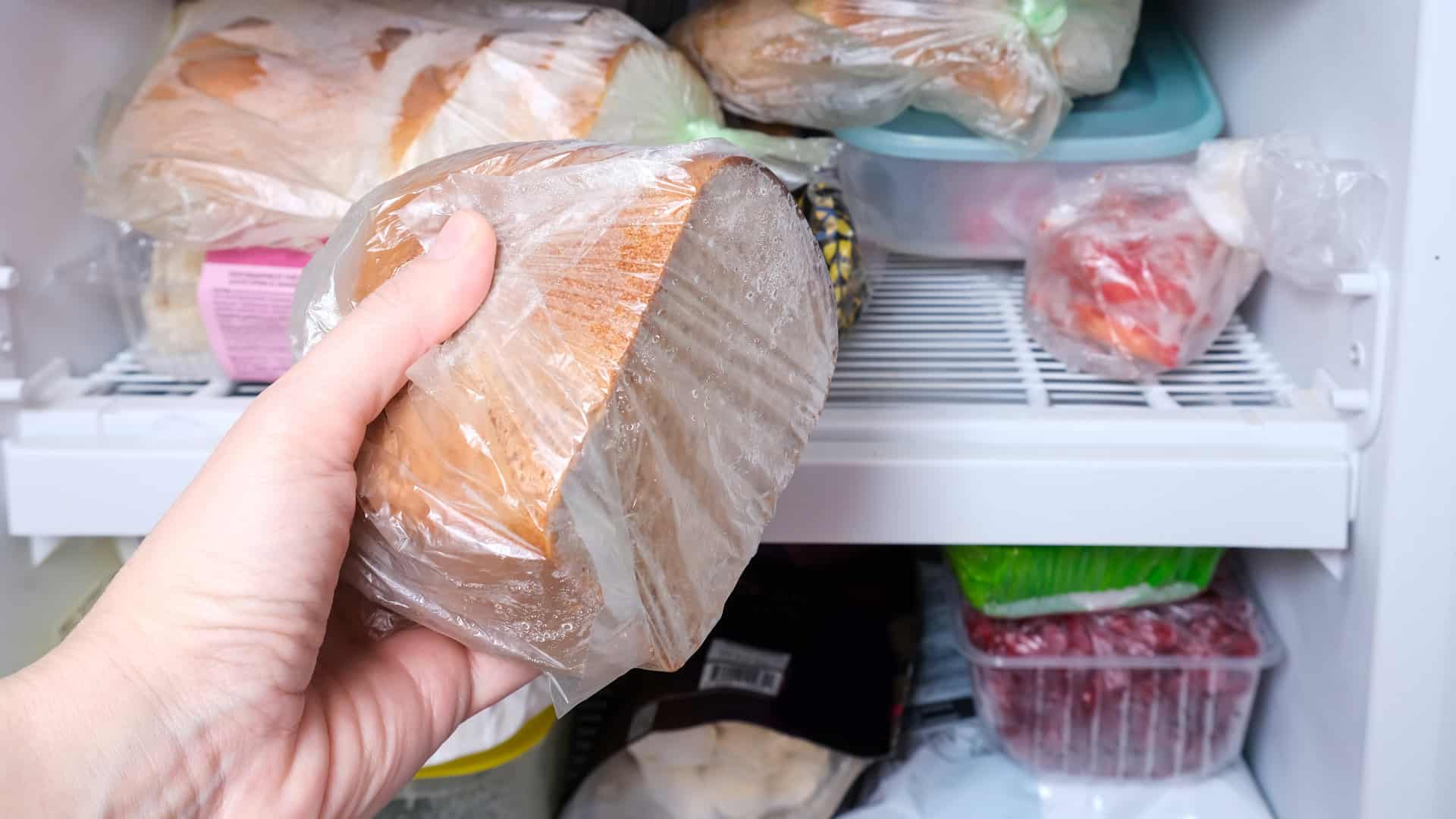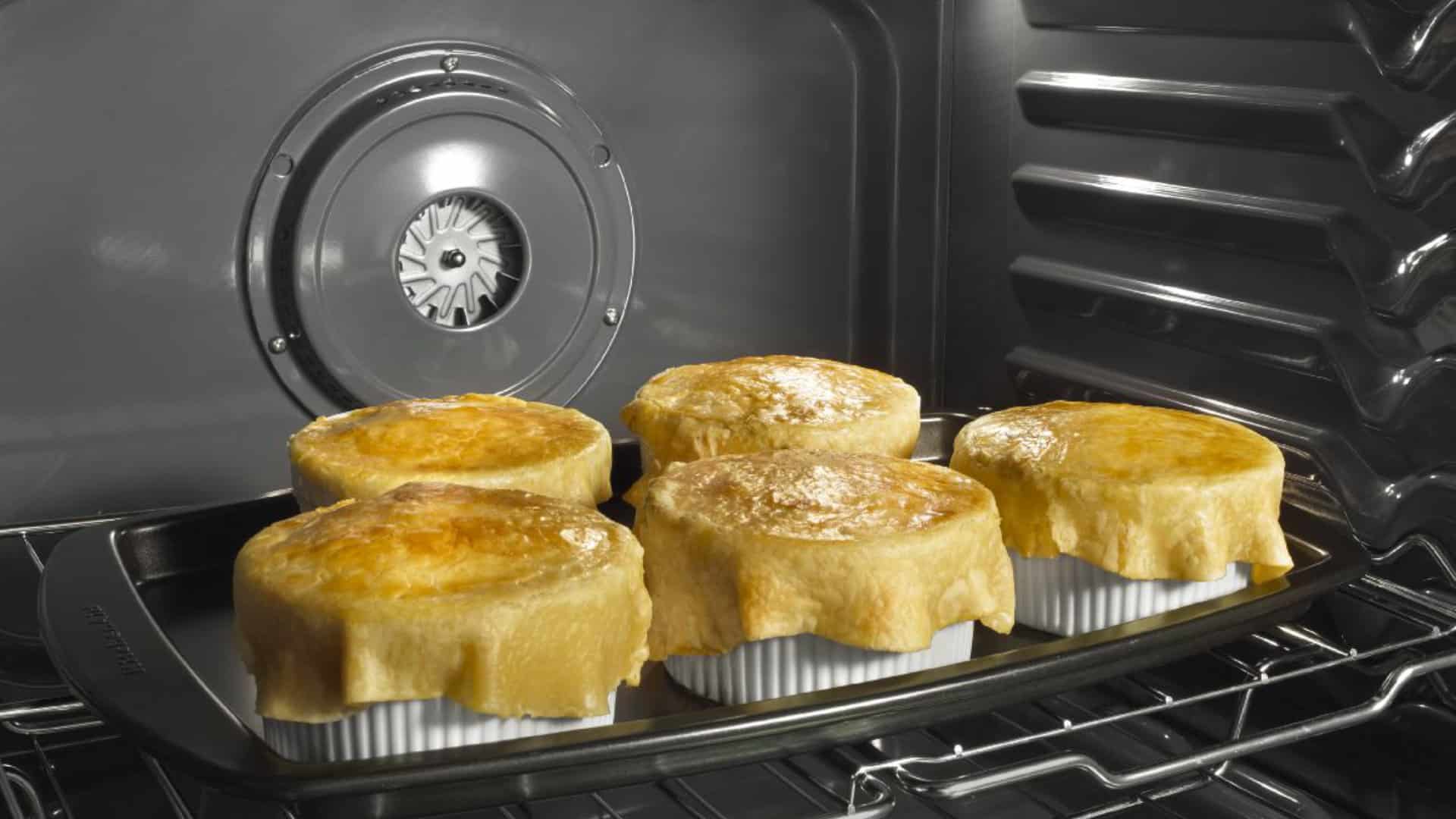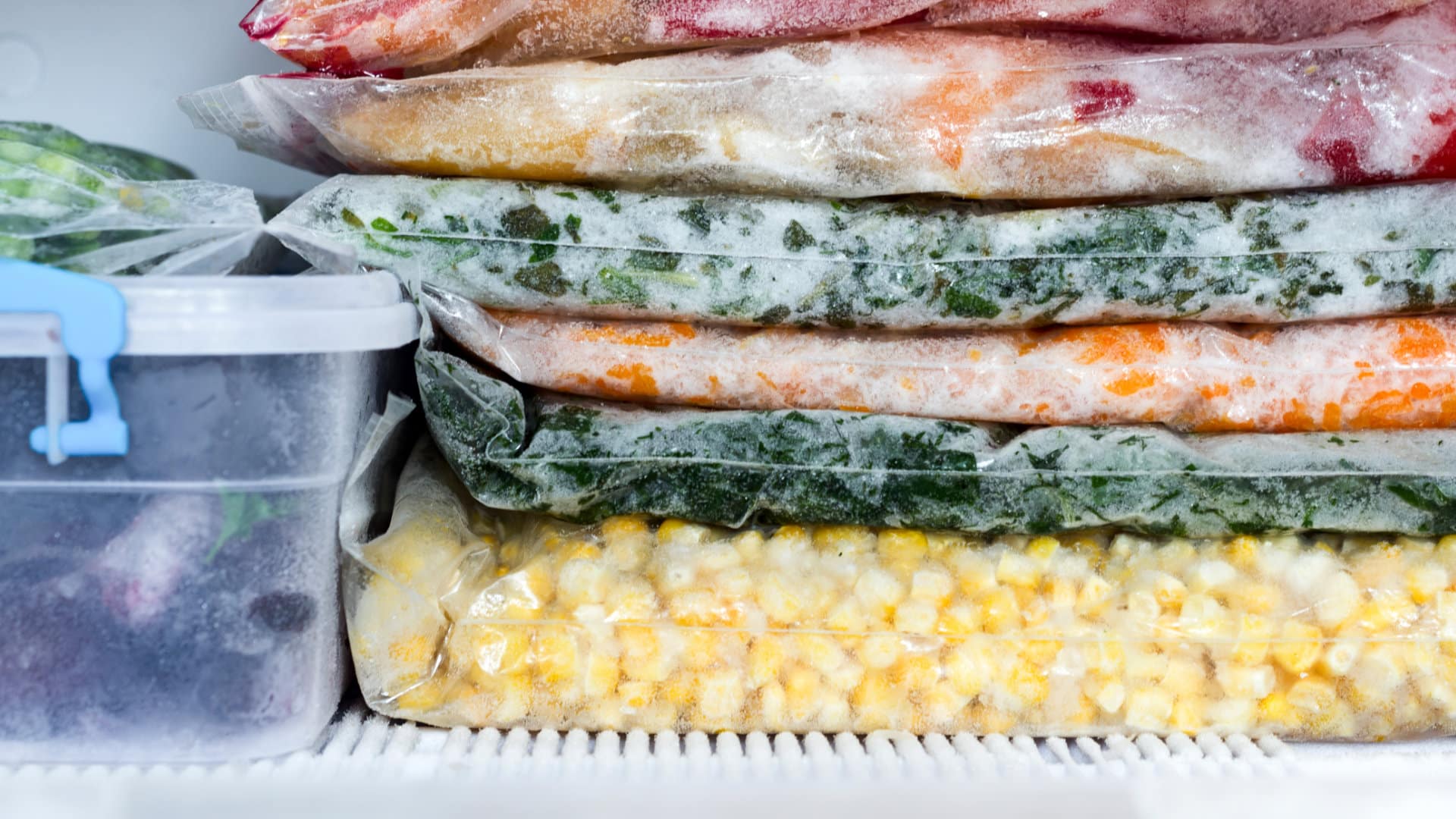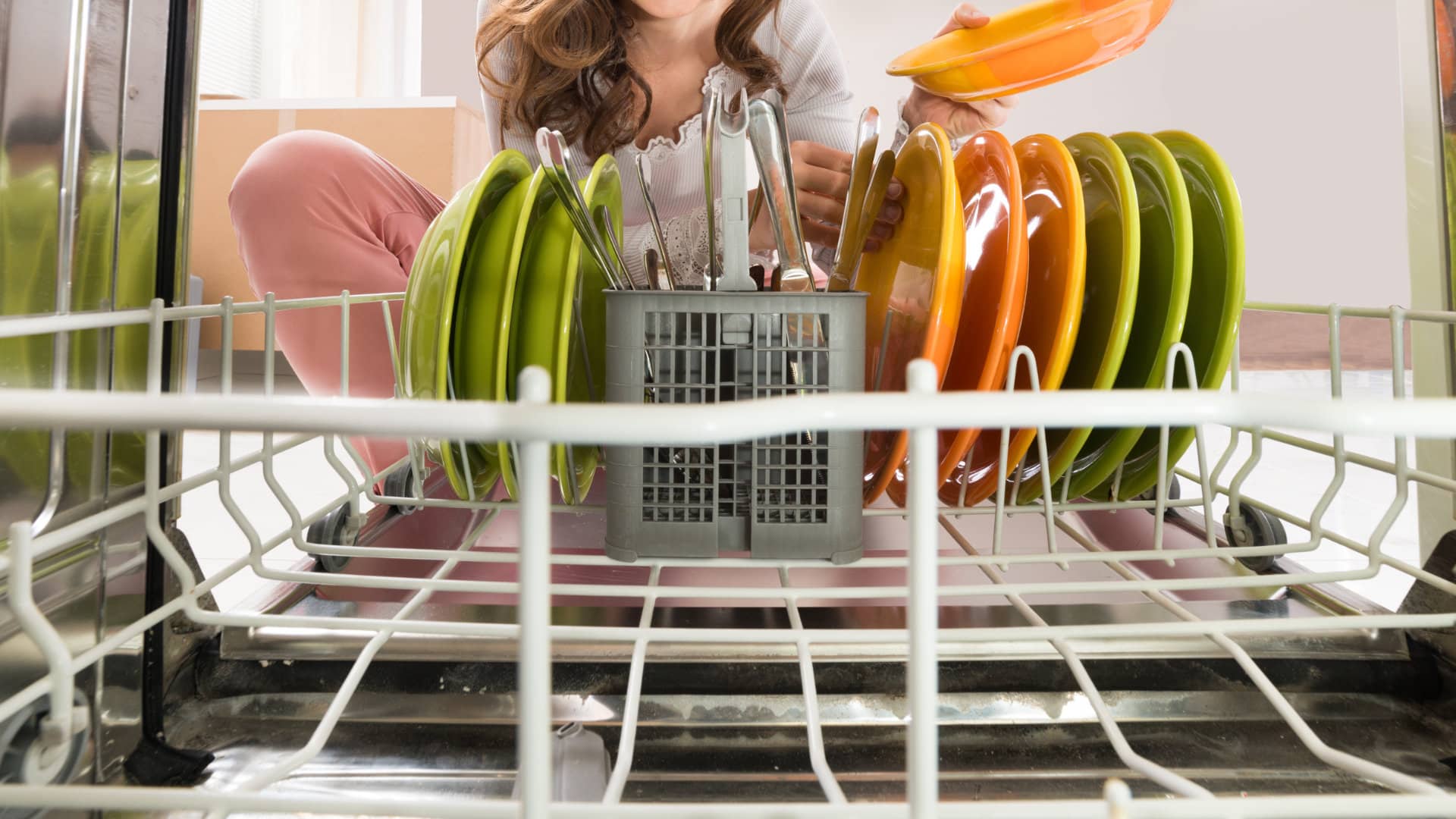
Bread has a short shelf life. Freezing bread is a great way to preserve your bread so you always have fresh bread on hand to make toast or a sandwich. While it can be tempting to just throw your loaf of bread into the freezer, there are some simple guidelines you can follow to ensure it freezes the right way so it will be fresh and tasty when defrosted.
In this article, we are going to discuss why you should freeze bread, how to freeze it properly, and then explain the best way to defrost it.
Let’s start by explaining why you should freeze bread.
Why freeze bread?
Here are the top reasons why you should freeze bread:
- Preservation. Freezing your leftover bread is a great way to extend its shelf life. This helps avoid unnecessary waste.
- Convenience. Having a stash of frozen bread means you have a supply of bread to access when required. This is really helpful if you need some bread in a hurry and it also means you don’t have to go to the grocery store as often.
- Keep it fresh. Freezing bread keeps it fresh. This helps you avoid waste and having to purchase bread as often.
- Variety. When you freeze lots of different types of bread you will have a wider selection of bread to choose from when you need it. You can buy your favorite bread varieties from the bakery and keep them in the freezer.
How to freeze different types of bread
Different types of bread may need to be prepared differently before freezing them. Here are some general tips to follow for different types of bread:
- Sliced bread. Sliced bread (both store-bought and homemade) can be frozen in a resealable plastic bag. Make sure you remove any excess air from the bag and then seal it airtight. Before placing the bag in the freezer, label it so you can track when it needs to be eaten.
- Whole bread. When it comes to whole loaves of bread, the best way to store it for freezing is to wrap it tightly with plastic wrap. Once wrapped, place the loaf into a resealable bag and label it. Wrapping it and placing it into a bag will prevent frostbite and ensure the bread can be frozen for longer.
- Artisan bread. When it comes to artisan bread like sourdough or ciabatta loaves, it’s a good idea to slice it up and then wrap each slice in plastic wrap. Once wrapped, place the slices into a sealable plastic bag and label it with the date and type of bread. Wrapping the bread and then placing it in a bag will give it two layers of protection when in the freezer.
- Rolls and burger buns. These types of bread products can be individually wrapped or kept together in a sealable bag. If kept in a bag, make sure all of the air is removed from the bag before sealing it. Label the bag or individually wrapped rolls or buns before placing them in the freezer.
- Pita bread and naan. If your pita bread or naan is store-bought and still in its original bag you can freeze it like that. Alternatively, you can add an extra layer of protection by wrapping the bag with plastic wrap. If they are homemade you can wrap each pita or naan slice individually and if you wish place them into a sealable plastic bag.
- Tortillas. When freezing tortillas, place a piece of parchment paper in between each one. You can then wrap the entire stack with plastic wrap. For extra protection, you can place the stack of tortillas in a sealable plastic bag.
How to defrost bread
When it comes to freezing bread it’s best to eat it within 3 to 6 months. Before you can eat it, you need to defrost it. Follow our tips below to defrost different types of bread.
- Sliced bread. To defrost sliced bread, remove as many slices as you want from the freezer. You can then let them naturally thaw for about 15 to 20 minutes, defrost them in the microwave (use the automatic defrost setting), or toast the bread straightaway without waiting for it to thaw.
- Whole bread. Remove whole bread loaves from the freezer. You can let it defrost naturally until it reaches room temperature, defrost it in the microwave (use the automatic defrost setting), or thaw it in the oven by heating it for 10 to 15 minutes at 350°F. Using an oven to defrost whole loaves helps restore the crusty exterior.
- Artisan bread. Remove the slices you want from the freezer. You can then let them naturally thaw for about 15 to 20 minutes, defrost them in the microwave (use the automatic defrost setting), or thaw them in the oven by heating them for 5 to 10 minutes at 350°F.
- Rolls and buns. Remove the number of rolls and buns you require from the freezer. You can then let them naturally thaw for about 15 to 20 minutes, defrost them in the microwave (use the automatic defrost setting), or thaw them in the oven by heating them for 5 to 10 minutes at 350°F.
- Pita bread and naan. These types of bread can be defrosted by removing them from the freezer and then just letting them naturally defrost. This will take about 10 minutes. Alternatively, defrost them in the microwave by using the automatic defrost setting.
- Tortillas. Tortillas are very easy to defrost. Once removed from the freezer they should naturally defrost within a couple of minutes. You can also put them in the microwave for about 10 to 20 seconds to defrost them quicker.

How to Fix Whirlpool Stove F9 Code

Fix Whirlpool Duet’s F20 Error Code

Freezer Working But Not Fridge? 5 Fixes

Speed Queen Washer Error Codes Explained

7 Reasons Why Your KitchenAid Ice Maker Isn’t Working

LG Oven F9 Error: Here’s How to Fix It

How to Replace an LG Refrigerator Air Filter

What Do Dryer Sheets Do?

How to Cook Corn on the Cob in the Microwave


